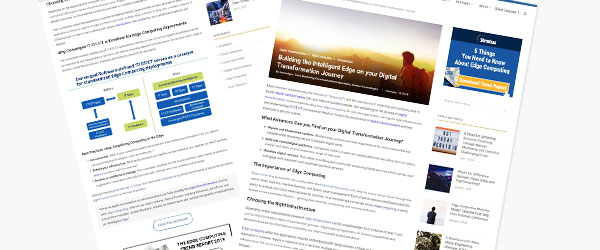Given the COVID-19 pandemic, we realize many business leaders are adjusting to new market conditions while preparing for further market shifts. Some are temporarily scaling back operations and others are shifting production to a new purpose to help fill a more immediate need.
This presents a unique opportunity for leaders to take a comprehensive view of their operations and seek out areas of improvement. Leaders may be exploring opportunities to digitally transform their operations in order to reduce risk and future proof processes. Based on 40 years’ experience helping companies securely and remotely protect valuable data we have developed the following resources on best practices for adopting digital transformation in order to simplify, protect and automate business-critical operations and prepare for the future.
Stratus “Lend a Hand”
Services program
Support and services offerings to help you during these challenging times.
Business Operations Continuity

Focus on Business Continuity in Times of Crisis
Organizations spend huge amounts of time on disaster recovery, but more often, it is more desirable and cost effective to prevent disasters than trying to recover from them. Business continuity drives methods to maintain business operations during a crisis – essentially automating and modernizing your business to maintain a competitive position after a crisis.

Increase Operational Efficiency with a Modern SCADA Infrastructure
In the face of the current health crisis, the many industries will be moving through one of the most transformative periods in history. Concerns about slowing economic growth, new energy alternatives, and demand concerns related to post COVID-19 will cause the industry to rethink its edge and technology infrastructure to build maximum efficiency for the future.

Industrial Automation Growth Lags, but IIoT Presents an Opportunity for Early Adopters of Edge Computing
Jason Dietrich, Chief Revenue Officer at Stratus Technologies outlines the benefits to those organizations that are embracing digital transformation and adopting edge computing technologies. “Smart enterprises looking to digitally transform and disrupt the status quo will reap the benefits of making capital expenditures now and be ready for the increased demand and opportunity when the market rebounds.”

Smart Manufacturing is Picking Up Steam
This blog highlights key recommendations when defining a strategy for adopting new and existing technologies to keep current operations and infrastructure running.

Building the Intelligent Edge on your Digital Transformation Journey
Learn how to begin your digital transformation journey, understanding how edge computing fits into the organization and how to address IT/OT/CT convergence. These best practices will help you get started.

Ready your Infrastructure for the Always-On World
Preventing downtime, rather than only planning for recovery, is the right approach. Infrastructure that supports real-time monitor and control and asset performance management ensures high availability of business critical operations.

Server Virtualization in Manufacturing
While the benefits of server virtualization at the corporate data center are compelling, its ability to address lifecycle management issues at the edge may make virtualization ideal for industrial automation and production modernization projects. Virtualization best practices can help organizations position themselves for the post crisis world.
Security and Protection

Building an Edge Security Strategy
One of the main concerns when introducing edge computing and industrial automation solutions is security since they operate outside the data center. These are some considerations to make when creating an edge security strategy.
Future-Proof Autonomous Work Environments

Enabling an Operational Architecture for Applications and Analytics
Establishing an operational architecture with the flexibility in strategy to utilize distributed computing and virtualized servers creates a production environment to leverage people, process and technology in a scalable manner while fitting into an overall architecture for a future-proof production environment.

Stratus’ Approach for Reducing Unplanned Downtime and Helping Future-proof Automation System Assets
This ARC View details how the use of virtualization can help minimize unplanned down-time while maximizing flexibility and simplifying management. Additionally, the previously separate OT and IT worlds are converging; providing common ground around unplanned downtime, security, and platform efficiency.
Additional Resources
CDC Business and Employer Guidelines for COVID-19
The CDC has provided resources for businesses and employers to respond to COVID-19.
Gartner Resources
Gartner has generated tools and research for business leaders to use as a resource dealing with the COVID-19 situation.

